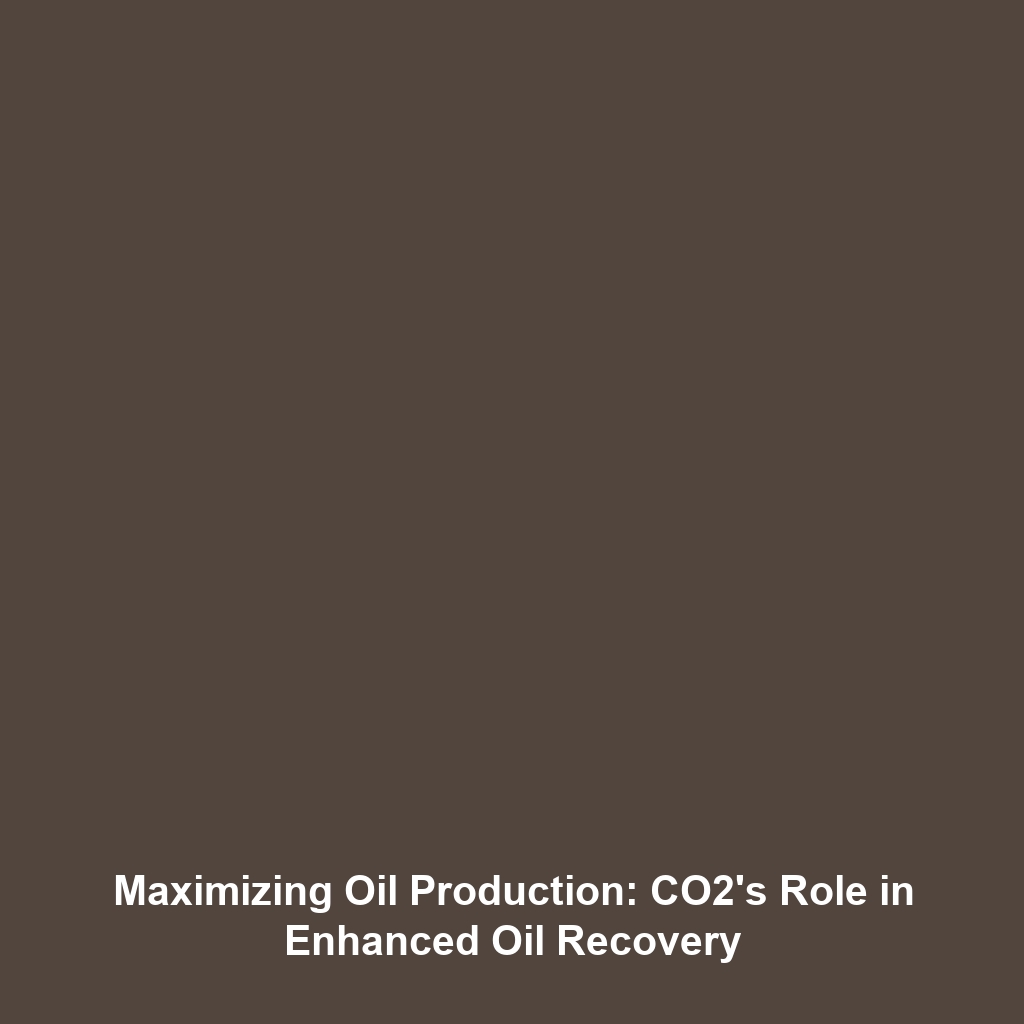Enhanced Oil Recovery (EOR) as a Commercially Viable Use of CO2
Enhanced Oil Recovery (EOR) stands as one of the most commercially viable applications of carbon dioxide (CO2), offering significant economic incentives for carbon capture and storage (CCS) initiatives. As the world faces pressing climate challenges, integrating EOR into CCS strategies not only helps in reducing greenhouse gas emissions but also enhances oil production efficiently. This synergy between EOR and CCS is crucial for advancing sustainable practices within the energy sector.
Key Concepts of EOR and Its Role in CCS
Enhanced Oil Recovery (EOR) utilizes CO2 to increase the amount of crude oil that can be extracted from an oil reservoir, thus optimizing resource utilization. The following key principles are fundamental to understanding EOR’s significance in the broader context of Carbon Capture & Storage (CCS):
- Injection Techniques: CO2 is injected into subsurface reservoirs, reducing oil viscosity and allowing for enhanced extraction.
- Economic Incentive: The use of captured CO2 in EOR generates revenue, making CCS projects more economically feasible.
- Carbon Sequestration: EOR can lead to long-term storage of CO2 in geological formations, contributing to reduced atmospheric CO2 levels.
Applications and Real-World Uses of EOR in CCS
The practical applications of Enhanced Oil Recovery (EOR) significantly demonstrate how CO2 is utilized effectively within the Carbon Capture & Storage (CCS) domain:
- Oil Fields: Many existing oil fields employ EOR methods to maximize production while capturing CO2 from industrial sources.
- CCS Projects: Projects such as the Petra Nova project in Texas exemplify how capturing CO2 from power plants helps in oil recovery operations.
- Research Initiatives: Academic and industry collaborations are enhancing techniques related to CO2 injection and monitoring to ensure effectiveness and safety.
Current Challenges of EOR in Carbon Capture & Storage
Despite its potential, EOR faces several challenges that can impede its widespread adoption in the context of Carbon Capture & Storage (CCS):
- Technical Limitations: The effectiveness of CO2 injection depends on reservoir characteristics, which may not be ideal in all locations.
- High Costs: Initial investment and operational costs can be a barrier, limiting the scalability of EOR projects.
- Regulatory Frameworks: Inconsistent regulations across regions can complicate project implementation.
Future Research and Innovations in EOR and CCS
Innovations in Enhanced Oil Recovery (EOR) techniques and technologies promise to enhance its efficacy as a commercially viable application of CO2 in the coming years:
- Advanced Monitoring Technologies: Emerging technologies for real-time monitoring can increase the efficiency and safety of CO2 injection.
- Metagenomic Research: Exploring microbial effects on oil reservoirs may lead to new CO2 storage techniques.
- Policy Initiatives: New governmental policies advocating for CCS and EOR can stimulate investment and development.
Conclusion
Enhanced Oil Recovery (EOR) represents a key intersection of economic viability and environmental responsibility in the realm of Carbon Capture & Storage (CCS). By promoting the capture and utilization of CO2, EOR not only offers an economically rewarding strategy for oil production but also contributes to climate change mitigation. Stakeholders in the energy sector are encouraged to explore further research on EOR and support initiatives that enhance its implementation in CCS. For more information, visit our pages on Carbon Capture & Storage and Recent Innovations in EOR Technology.






